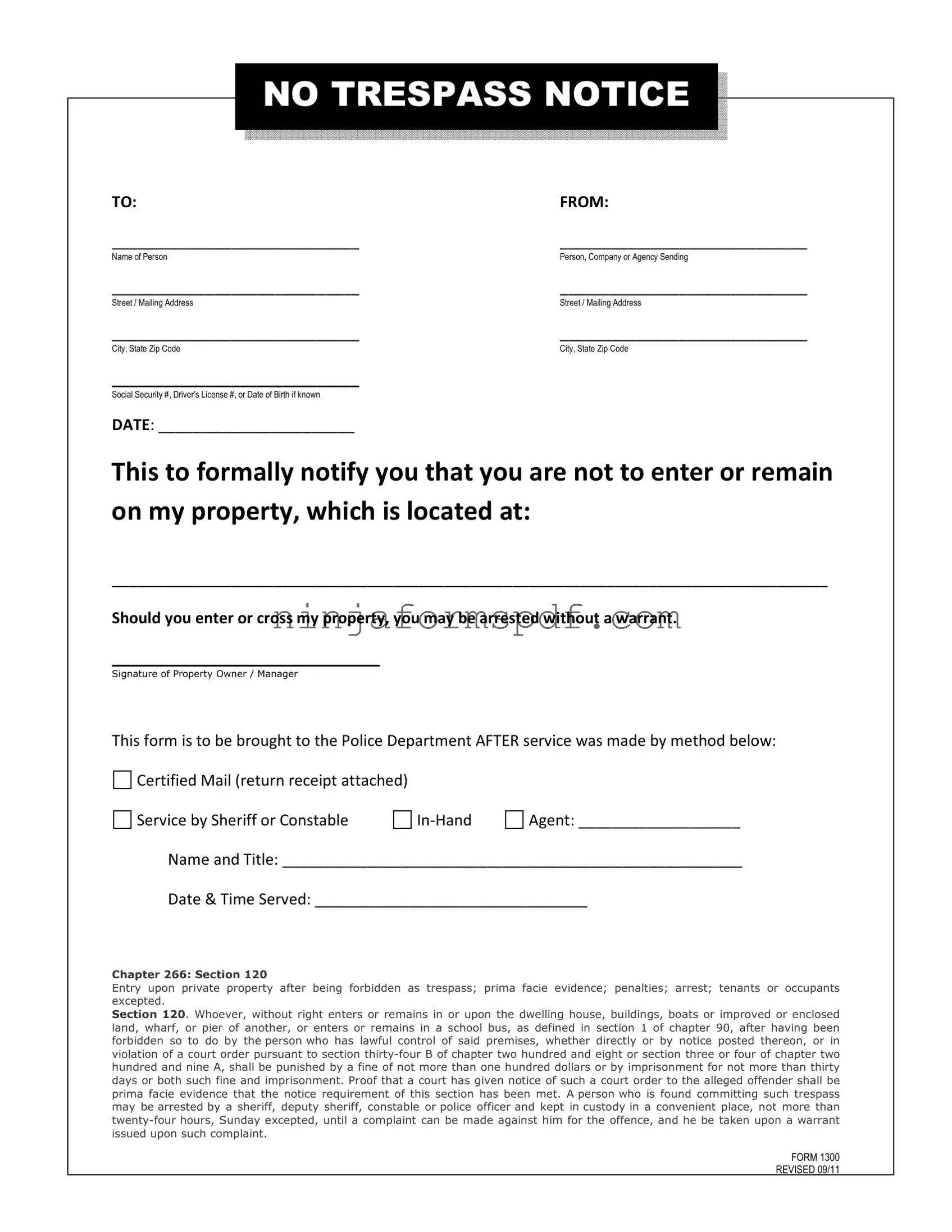What is a No Trespassing Letter?
A No Trespassing Letter is a written statement used to formally tell someone they are not allowed to enter or remain on your property. It serves as a clear warning that if the individual violates the notice by entering your property, they risk being arrested without needing a warrant.
How do I fill out the No Trespassing Letter form?
To complete the No Trespassing Letter, you'll need to provide specific information in the designated spaces. This includes your name and address ("FROM" section), the name and address of the person you're sending the letter to ("TO" section), and the location of the property from which they are barred. Additionally, you'll need to insert the date the letter is sent and, after it's served, the details of the service method, the agent's name and title, and the date and time it was served.
Who can I send a No Trespassing Letter to?
You can send a No Trespassing Letter to anyone you wish to formally notify that they are not permitted on your property. This might include estranged relatives, former friends or lovers, or someone who has previously trespassed on your property.
Is a No Trespassing Letter legally binding?
Yes, a No Trespassing Letter can be legally binding if it meets your local jurisdiction's requirements. When properly executed and delivered, it serves as a legal notice. If the recipient disobeys this notice, they could be arrested for trespassing.
How should the No Trespassing Letter be delivered?
The letter can be delivered in several ways, including certified mail with a return receipt, service by sheriff or constable, or in-hand delivery by an agent. The delivery method selected should provide proof that the letter was received, which is crucial if enforcement action becomes necessary.
What should I do after the letter is served?
After the letter is served, you should take the form to your local Police Department, as indicated on the form. This ensures that there's a record of the notice being given, which can be important if there are any future incidents or legal actions.
Can I write a No Trespassing Letter by myself?
Yes, you can write a No Trespassing Letter by yourself. It's important to make sure that the letter clearly states its purpose, the property boundaries, and the legal implications if the notice is violated. However, consulting with a legal advisor to ensure it meets all necessary legal requirements in your jurisdiction is recommended.
What happens if the person ignores the No Trespassing Letter?
If the person ignores the letter and trespasses on your property, they can be arrested without a warrant for violating the notice. Since you've formally notified them, the law is on your side in taking further legal actions if necessary.
Do I need to post a No Trespassing sign if I send out a letter?
Posting a No Trespassing sign on your property in addition to sending out a letter is a good practice. While not always legally required, it reinforces the message that unauthorized entry is prohibited and can serve as an additional deterrent.
Can the No Trespassing Letter be rescinded or canceled?
Yes, the person who issued the No Trespassing Letter can rescind or cancel it at any time. If you decide to allow the person back onto your property, it's wise to provide a written revocation of the No Trespassing notice, specifying that they are now allowed on your property again.

